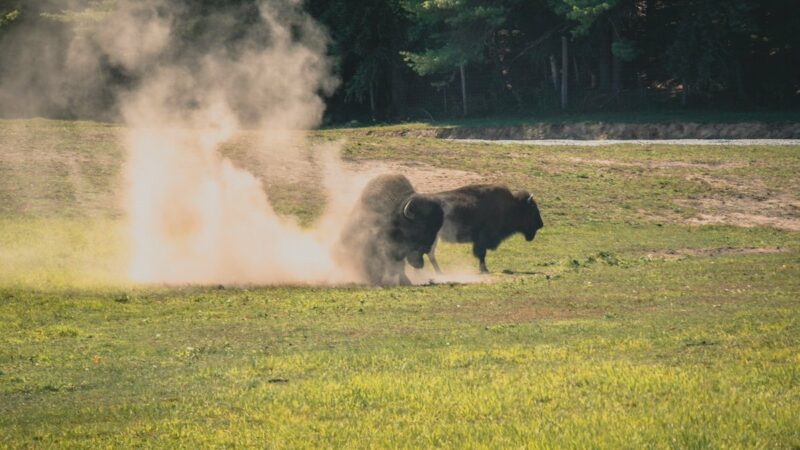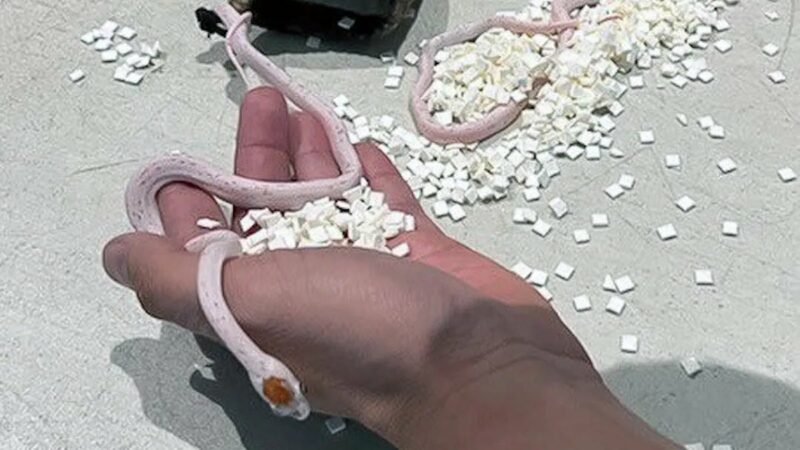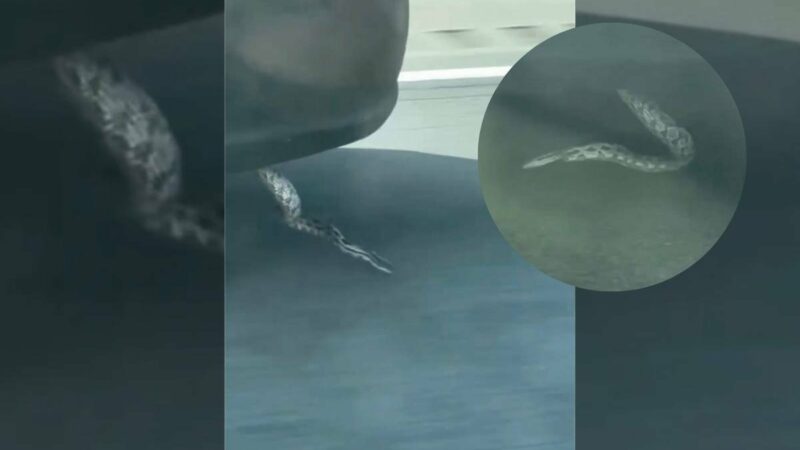The Outdoors.com Guide to ‘Fighting’ off Tiny Animals—From Skunks to Mosquitoes
If you’re spending time outdoors, you’ll inevitably come across some wildlife. In most cases, it’s best to keep your distance. This rule is especially true of larger animals that could easily cause physical harm, but what about small animals? You should give them distance, too.
Videos by Outdoors
In fact, believe it or not, some of the smallest critters can cause the biggest problems. Did you know that the animals that cause the most injuries to humans at Grand Canyon National Park are squirrels? That’s right. They bite people.
And do you remember which animal made headlines after videos of attacks off the California coast went viral? It was an adorable sea otter that became a surfer/surfboard-attacking menace.
It’s important to note that humans often play a role in these negative interactions, often by feeding wildlife, which can alter behavior and lead to aggression. According to the National Park Service, you should give all animals space, whether they’re big, small, or in between.
If you’re ever approached or attacked by one of these small animals, here’s what you should do:
Raccoons
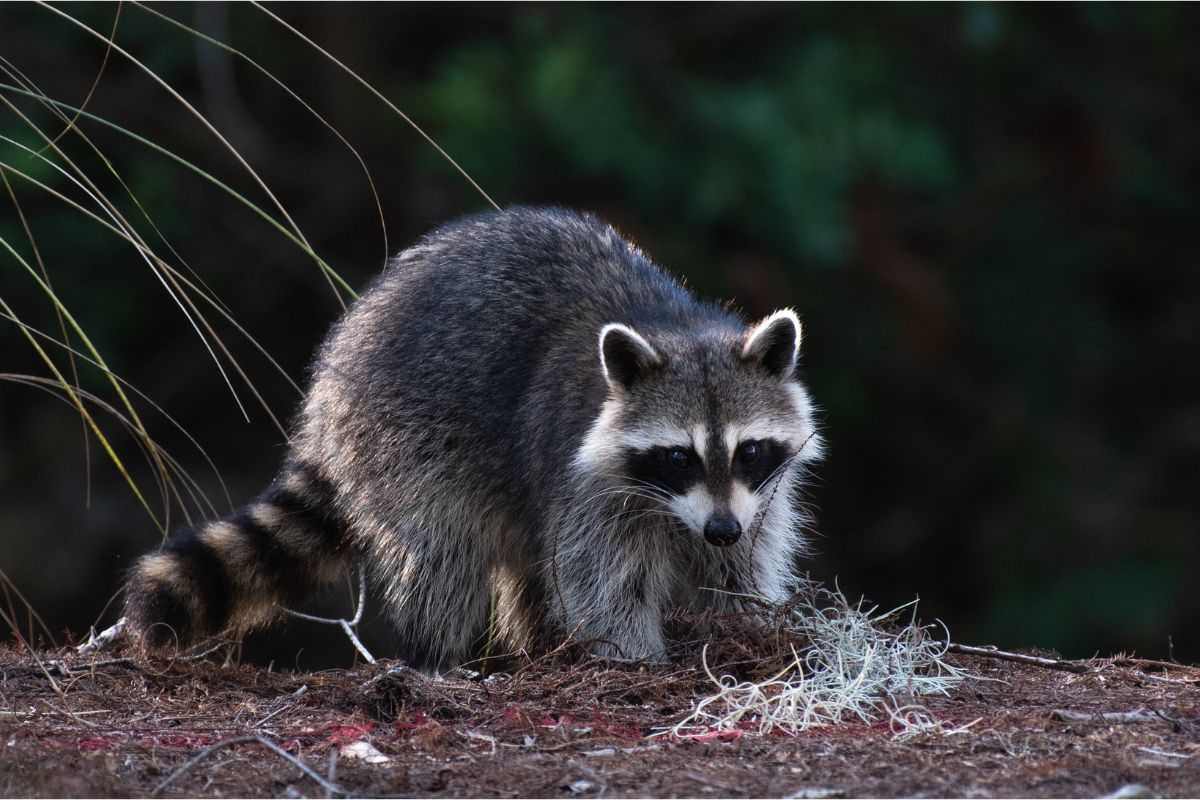
Raccoons live throughout the U.S., except for parts of the Rocky Mountains and areas of the desert southwest. The bandit-looking rodent lives in the woods and in urban areas where they scavenge for food from trashcans.
The best way to avoid raccoons is to limit their food supply so they don’t have a reason to go through your campsite. Generally, the animal is only aggressive if it feels threatened. However, if it’s too late for that, there are a few easy tricks to scare a raccoon off.
According to wildlife experts, you should clap your hands, step towards the animal, spray it with water, or throw rocks in its direction. These steps should be enough to remind a raccoon that you’re the larger animal.
If you are bitten or scratched by a raccoon, you should seek medical help immediately, as the animal can carry rabies.
Skunks
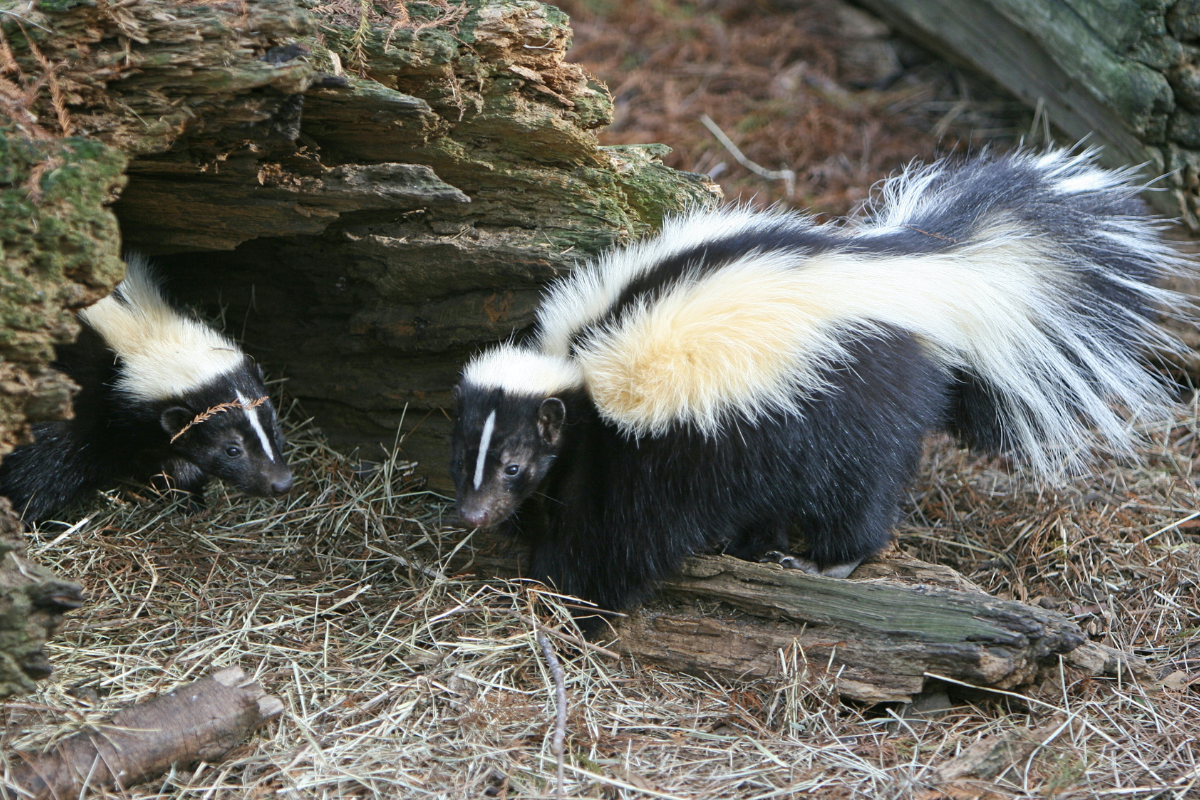
For some, a skunk is the biggest threat they’ll encounter on their local trail. The small black-and-white animal isn’t so fierce, but it’ll leave you smelling terrible if you have a run-in with one.
Like many of the animals on this list, skunks would prefer to have nothing to do with people. However, if they feel threatened by a person or dog, they’ll spray.
Before spraying, a skunk will stand on its hind legs and pound the ground with its front paws. If you see this, back away quietly and slowly to try and avoid being sprayed.
However, sometimes it’s unavoidable.
So, now what?
The Humane Society of the United States supports this formula:
- One quart of 3% hydrogen peroxide
- ¼ cup of baking soda (sodium bicarbonate)
- 1-2 teaspoons of liquid dish soap
- Plus, vinegar to neutralize the smell
They also recommend cleaning sensitive areas like your eyes with cool running water.
Non-Venomous Snakes
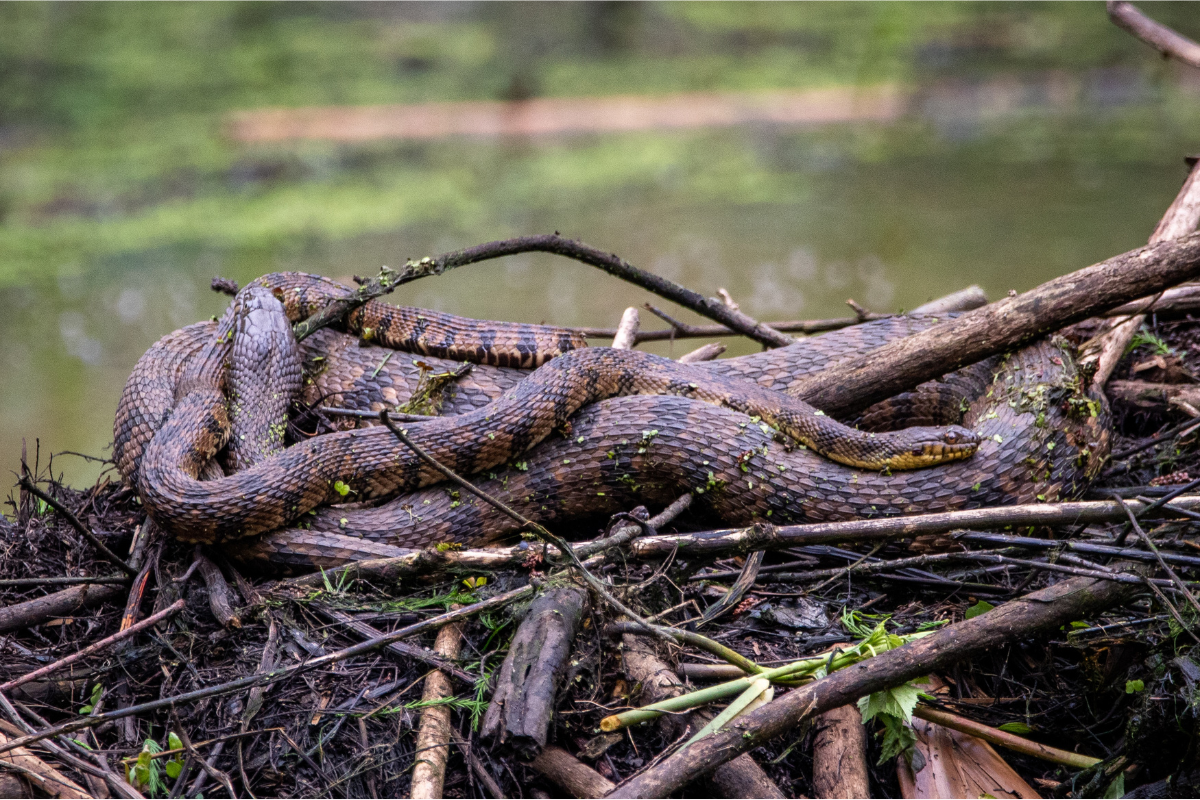
Venomous snakes are the snakes to be concerned about, but it can be hard to tell venomous snakes from non-venomous ones. For instance, the difference between a water snake and a cottonmouth is pretty insignificant on the outside, but one will leave you with a nasty bite that’ll heal, and the other could kill you. In reality, any snake bite can be painful and dangerous, whether it contains venom or not.
If you encounter a snake in the wild and you are outside of striking distance, you should stand still and back away slowly. If a snake starts coming toward you aggressively, you should try to get away. Most people can outrun most snakes. If there’s a long stick nearby, you can use it to protect yourself as you back away, giving it something to strike at that’s not your body.
Seek medical attention if you’re bitten by a snake. The CDC recommends taking these steps and precautions after a snake bite:
- Take note of the shape, color, and any distinguishing marks of the snake that bit you
- Keep still and calm to prevent the venom from spreading quicker (do this no matter what, just in case there’s venom)
- Seek medical attention immediately
- Don’t try to trap the snake that bit you
- Don’t attempt to suck out the venom
- Don’t apply ice
- Don’t make a tourniquet
Here are some more snake bite tips here.
Otters

A spike in sea otter aggression grabbed the media’s attention this year. While sea otters are cute, wildlife experts recommend keeping your distance, especially if one starts to approach you.
“Otters have strong jaws and teeth that they need to survive to eat the shellfish that they consume, and so, if an otter did choose to bite someone, it would have an impact,” Jessica Fujii with the Monterey Bay Aquarium told Outdoors.com in July of this year.
Members of Montana Fish and Wildlife also weighed in on the debate after a person was attacked. They say it’s important to remember that otters are predators, and, if attacked, you should fight back to fend off the animal.
Mosquitoes and Other Pests
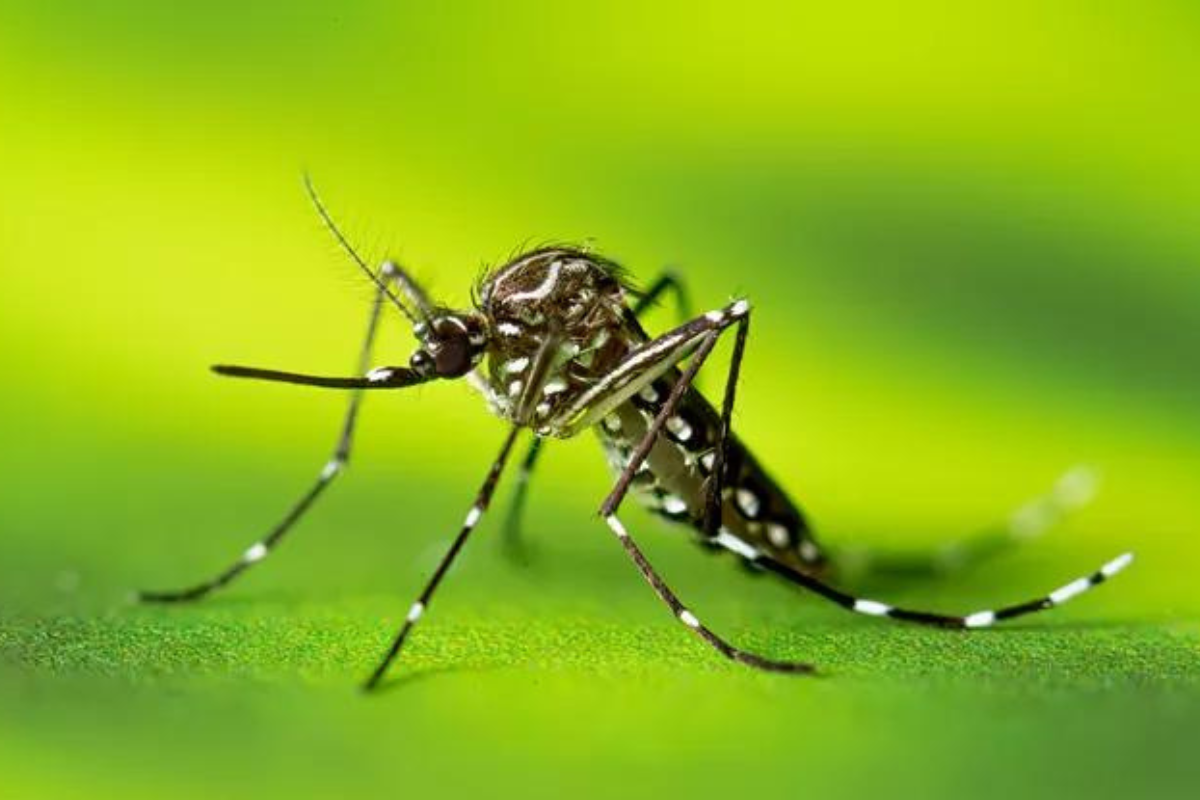
Finally, we arrive at the smallest of critters—annoying little bugs. Mosquitoes are one of the most deadly creatures on the planet. The blood-sucking bugs can spread diseases like West Nile and malaria. Even survivalist Bear Grylls listed mosquitoes on his list of insects to avoid.
While outdoors, one of the best ways to avoid mosquitoes is to cover up your skin. Lightweight long-sleeved shirts can protect you from mosquitoes and other insects that bite or sting.
In many parts of the world, you should also use insect repellent to fight back against these tiny animals—some of which really are out to get you. The CDC says while there are plenty of natural mosquito repellents, they recommend using one that the EPA has approved for its effectiveness.

Source: https://outdoors.com/the-outdoors-com-guide-to-fighting-off-tiny-animals-from-skunks-to-mosquitoes/

